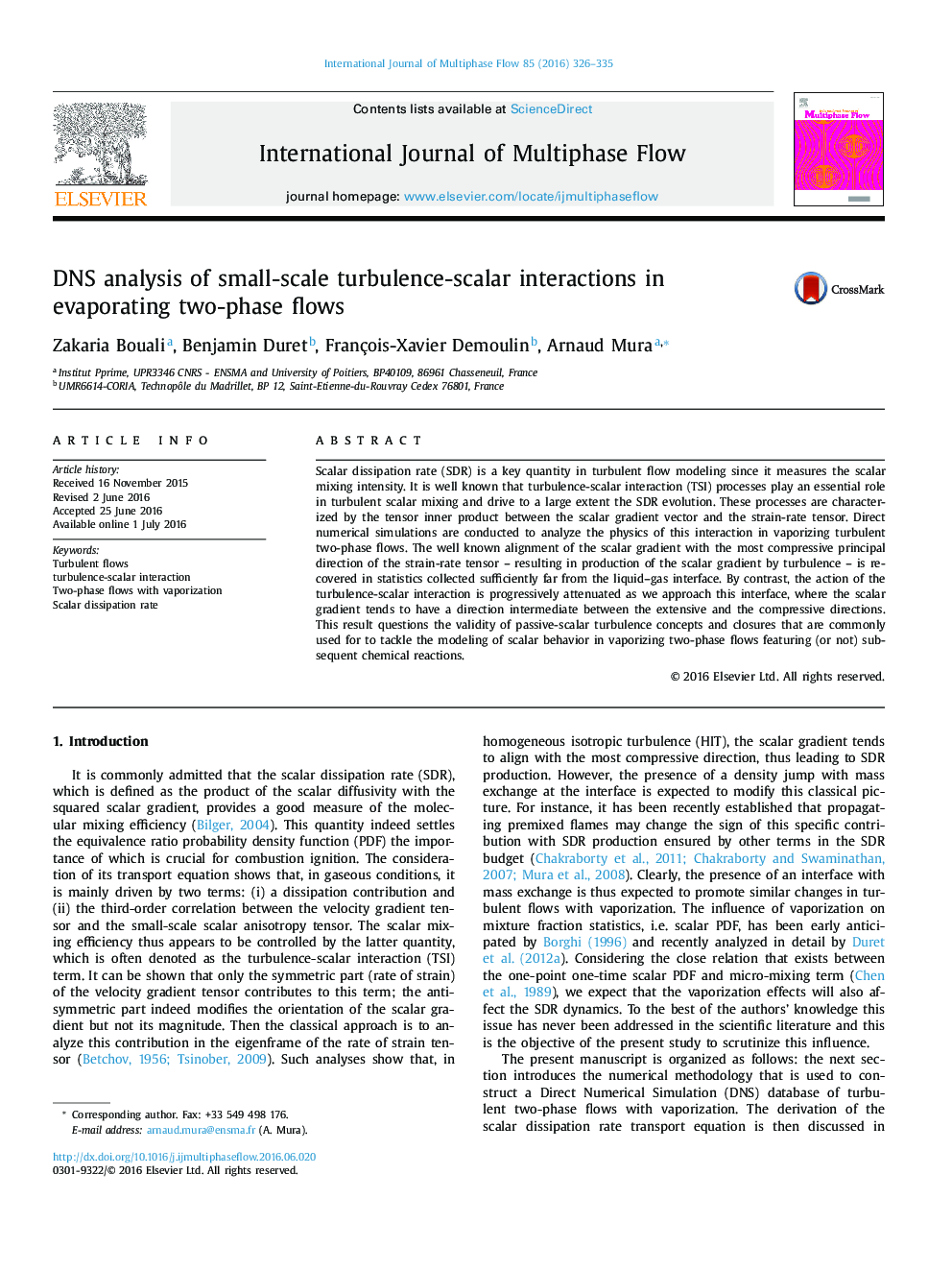| Article ID | Journal | Published Year | Pages | File Type |
|---|---|---|---|---|
| 7060247 | International Journal of Multiphase Flow | 2016 | 10 Pages |
Abstract
Scalar dissipation rate (SDR) is a key quantity in turbulent flow modeling since it measures the scalar mixing intensity. It is well known that turbulence-scalar interaction (TSI) processes play an essential role in turbulent scalar mixing and drive to a large extent the SDR evolution. These processes are characterized by the tensor inner product between the scalar gradient vector and the strain-rate tensor. Direct numerical simulations are conducted to analyze the physics of this interaction in vaporizing turbulent two-phase flows. The well known alignment of the scalar gradient with the most compressive principal direction of the strain-rate tensor - resulting in production of the scalar gradient by turbulence - is recovered in statistics collected sufficiently far from the liquid-gas interface. By contrast, the action of the turbulence-scalar interaction is progressively attenuated as we approach this interface, where the scalar gradient tends to have a direction intermediate between the extensive and the compressive directions. This result questions the validity of passive-scalar turbulence concepts and closures that are commonly used for to tackle the modeling of scalar behavior in vaporizing two-phase flows featuring (or not) subsequent chemical reactions.
Related Topics
Physical Sciences and Engineering
Chemical Engineering
Fluid Flow and Transfer Processes
Authors
Zakaria Bouali, Benjamin Duret, François-Xavier Demoulin, Arnaud Mura,
